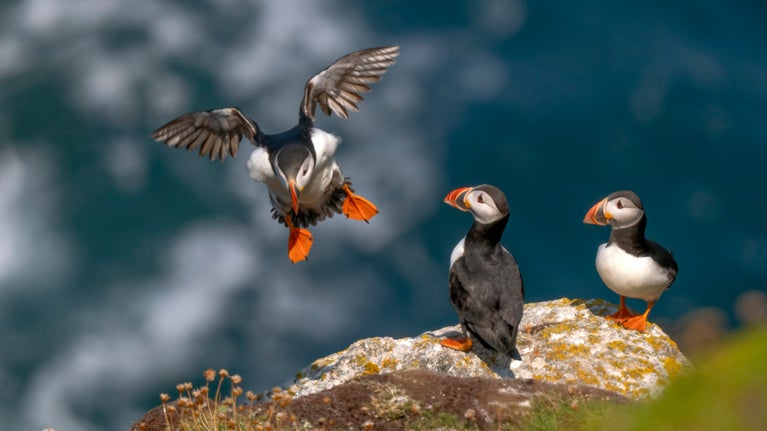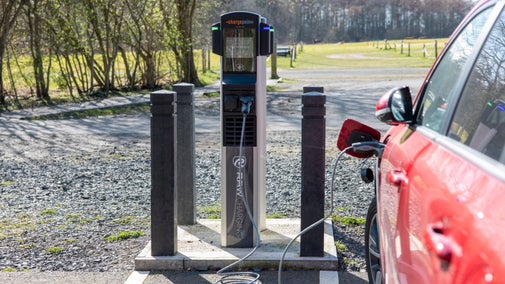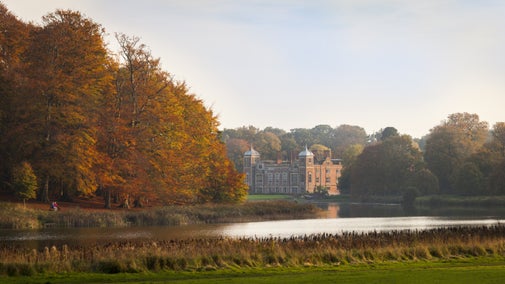
Caring for nature
Learn about our work on nature, climate and sustainability, and find out what you can do to make a difference.

After governments from around the world met at COP26 in Glasgow to discuss the global fight against climate change, we reflect on what the agreements mean for the future of nature and heritage. Learn more about how the National Trust are joining in the debate on what should happen next and how we are campaigning for further changes to protect the environment.
COP26, which took place in Glasgow in November 2021, was the UN's 26th annual climate summit and meeting of the Conference of Parties (COP). It brought together politicians, leaders, and organisations from across the world to discuss how to accelerate climate action.
COP26 was critically important. It was an opportunity for nations that signed up to the Paris Agreement to present their plans to cut carbon emissions as part of efforts to limit global warming to below 2C (ideally 1.5C) compared to pre-industrial levels.
The Glasgow negotiations achieved some success. They continued to push the global transition towards renewable energy and effectively recognised the role that restoring nature must play in fighting climate change.
The final agreement, however, fell significantly short of the critical goal of reducing emissions to a level that keeps increases to average global temperatures within +1.5C.
Several senior representatives from the National Trust observed the negotiations and participated in the summit.
Before COP26, the National Trust partnered with organisations including the RSPB, Woodland Trust and National Trust for Scotland to call on the UK Government, devolved administrations and world leaders to drive the investment and action needed to help nature and climate.
Issues cited in the call for action included how the protected sites network was not big enough nor well-managed for its species and carbon stores; how the support scheme for farming in England needed much greater detail and ambition, and how the UK Government's Net Zero Strategy ignored the central role nature and changes to land use must play.
Each organisation made commitments to deliver action. The National Trust committed to restoring peatlands, improving river catchments, creating new habitats such as salt marsh and establishing 20 million trees to meet the recommendations of the UK’s climate experts.

The Glasgow Climate Pact was adopted at the COP26 UN climate conference.
We attended COP26 to raise awareness of how a changing climate is affecting beaches, countryside sites and places of historical interest, and highlighted the role nature-based solutions can play in tackling the challenges we all face.
Not only did we share stories of how the Trust is adapting houses, collections and land in response to the climate crisis, but also reinforced our commitment to decarbonising historic buildings.
The National Trust's Director General Hilary McGrady and Ben McCarthy, Head of Nature Conservation and Restoration Ecology, spoke at COP26 at the International Union for Conservation of Nature (INCU) Peatland Pavilion.
They discussed nature-based solutions and shared examples of successful peatland restoration projects. Representatives also attended the Decarbonisation Summit to talk about sustainable agriculture and decarbonising the National Trust's investment portfolio.
We're stepping up, but governments need to do the same. Without policy, resources and clear leadership, we risk losing sites of historical and national significance to the worse effects of climate change.

We want to see the Government turn the commitments made at COP26 into action by accelerating domestic policy and lobbying for greater speed and ambition in delivery abroad.
The places the National Trust cares for are at the forefront of tackling the climate emergency. We've already had to make significant changes to how we manage land, source energy, protect wildlife and look after historic buildings and collections. We will continue lobbying for robust environmental policies that reduce the threat of the climate and nature crises.

Learn about our work on nature, climate and sustainability, and find out what you can do to make a difference.

Scotland's largest member organisation protecting Scottish wildlife, gardens and glens, castles, battlefields and islands.

The Royal Society for the Protection of Birds is a charitable organisation registered in England and Wales and in Scotland.

The UK's largest woodland conservation charity.
Learn about the six climate and nature-based targets discussed at the Climate and Land Summit and how the solutions are being applied at National Trust places.

From tips on saving water to combatting plastic pollution, learn more about our work to protect precious coasts and rivers for wildlife and people, and what you can do to help.

Find out how we're planting and establish 20 million trees that will absorb carbon and help tackle climate change.
With support from the Government’s Green Recovery Challenge Fund, we're looking for ways to protect our environment and combat climate change. Find out more about the work we're doing.

Do you own an electric vehicle? Find out which of the places we care for have charging points for your vehicle.

We believe that nature, beauty and history are for everyone. That’s why we’re supporting wildlife, protecting historic sites and more. Find out about our work.
